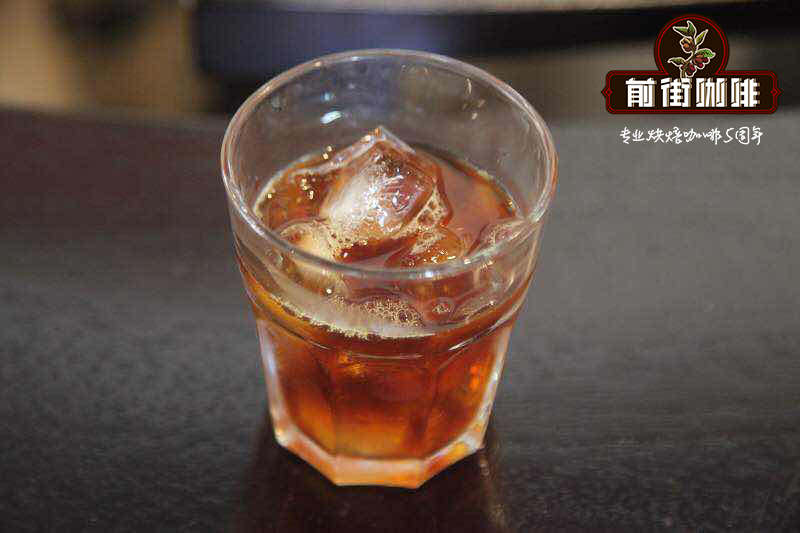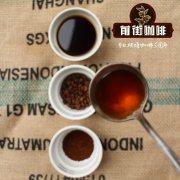What are the coffee-producing areas in Africa? How does African coffee taste good? A famous coffee maker in Africa

Professional coffee knowledge exchange more coffee bean information please follow the coffee workshop (Wechat official account cafe_style)
What are the coffee-producing areas in Africa? How does African coffee taste good? What are the famous coffee producing countries in Africa?
Africa is the birthplace of coffee, and there are naturally many coffee-producing countries. Coffee is produced in Congo, Rwanda, Kenya, Angola, Zimbabwe, Mozambique, Ethiopia and other countries.
Yemen (Yemen)
Famous representative coffee: mocha Matari (Mocha Mattari)
In the early days, Yemeni coffee was mainly exported from the port of Mocha, so the coffee exported from here later took Mocha as its name. In Yemeni coffee, Mattari and Sanani are more famous, of which Matari tastes full-bodied, with strong acidity and cocoa flavor, while Sanani has a more balanced taste and aroma. The coffee beans produced in Yemen belong to Arabica. Generally speaking, mocha beans are smaller than ordinary coffee beans and look very different from other coffee beans with large particles. However, although small, it contains distinct features, especially the distinct fruit acid is often used as a flavor enhancement role in mixed coffee, no wonder it is compared to the red wine in coffee, the aroma and sour taste are particularly aftertaste. The name Mocha can be written in several ways, "Mocca", "Mocha", "Moka", "Mokha". Wait, but they all mean the same thing. Mocha beans are especially obvious in deep roasting because of their unique chocolate flavor, so there is a fancy coffee flavored with chocolate sauce and named after mocha coffee.
Ethiopia (Ethiopia)
Well-known representative coffee: Mocha Harra, Yirgacheffe
Across the Red Sea and opposite Yemen, Ethiopia is the first place in the world to find coffee trees in Arabica. Coffee is grown almost everywhere in the country. Among them, the eastern Highland Hara (Harra) produces the famous Haramoka, which has a special wine aroma and acidity, which is equivalent to the Yemeni mocha and is a high-quality coffee. Sidamo and Djimmah in the south are also well-known coffee producers, and the coffee produced is slightly different from that produced by Hara, with a refreshing sour taste and drupe aromas. In Sidamo, there is a community domain name called Yirgacheffe, whose coffee has very charming features, with the aroma of jasmine and lemon, and the special taste as sweet as honey, so it is famous all over the world. Why is the port of Mocha in the country of Yemen, but the coffee from Ethiopia is also called Mocha? That's because Ethiopian coffee was previously exported from the Yemeni port of Mocha, so it is also named after mocha and subdivided by different names of origin, such as Mokhara, Mokajima and so on. So it's the same mocha coffee, it could be from Yemen or it could be from Ethiopia.
C ô te d'Ivoire (Cote dancers / Ivory Coast)
Well-known representative coffee: none
C ô te d'Ivoire is a country in West Africa, next to Guinea and Liberia. C ô te d'Ivoire is a name translated from French, but it is C ô te d'Ivoire if it is literally translated by pronunciation. Under French rule, coffee, along with cocoa and palms, was grown heavily on the coast to stimulate exports, and by the 1960s coffee production had increased to make C ô te d'Ivoire the third largest coffee exporter after Brazil and Colombia. However, in recent years, due to the impact of climate, economy, aging and reduced production of coffee trees, its coffee production has not been prosperous in the past. Since C ô te d'Ivoire is also a major producer of coffee in Africa, why are we not familiar with Ivorian coffee? This is because Ivorian coffee is almost entirely robusta, with only a few experimental Arabica coffees. As mentioned earlier, because of its special taste and characteristics, Robusta coffee is mostly used for purposes such as mixed instant coffee or canned coffee, and is rarely consumed directly in the form of fine coffee. Therefore, it does not often appear in the coffee-producing countries that we often mention.
Kenya (Kenya)
Well-known representative coffee: Kenya AA
Kenya is located in East Africa, right on the equator, with the Indian Ocean to the east, Ethiopia to the north and Tanzania to the south. Kenyan coffee is characterized by obvious fruit aromas and acidity, with a hint of wine in the full-bodied taste. Kenyan coffee is mostly grown in the southwest and east of the plateau, the varieties are Arabica species, and are washed coffee, the common varieties are Bourbon, Typica, Kents, Riuri 11 and other four varieties. The bright fruit aroma and acidity of Kenyan coffee in shallow roasting is regarded as like fruit tea, which shows its unique flavor. Among them, the well-known Kenyan AA is full of particles and rich in taste, which is well received by the world.
Tanzania (Tanzania)
Well-known representative coffee: Kilimanjaro
Tanzania is also located in eastern Africa, to the south of Kenya and to the east of the Indian Ocean, with a coastline as long as 1500 kilometers. Coffee is not the most important agriculture in Tanzania, mostly small-scale operations, the rest still export corn, cotton and other major agricultural products. Most of the coffee is grown on the slopes of the Kilimanjaro volcano in northern Tanzania, near Kenya. About 70% of the coffee is Arabica, which is treated by washing, while the remaining 30% of Robusta are treated by the sun. The Creamanjaro coffee produced here is generally highly acidic, but slightly weaker than that of Kenya, and its taste is similar to that of Kenya, with a rich texture and a strong sweet aroma.
Zimbabwe (Zimbabwe)
Well-known representative coffee: Zimbabwe
As can be seen from the map on the left, Zimbabwe is a landlocked country not near the sea in southern Africa, with Mozambique on the right. Coffee was only grown in Zimbabwe at the beginning of the 20th century, mainly in the eastern plateau, which is treated by washing. Zimbabwe's coffee is similar to Kenya with strong acidity and fruity aroma, but unlike Kenya, it has a pepper-like flavor. The best coffee comes from Chipinge.
Malawi (Malawi)
Well-known representative coffee: Malawi
Malawi is a small country in southeastern Africa and a landlocked country not near the sea. most of its coffee is grown in the northern plateau, but the yield is not large. But although it is not near the sea, it can be seen on the map that there is a very large lake in the northeast. It is Lake Malawi, which is also the natural boundary between Malawi and its neighboring countries. Compared with Kenya, Malawian coffee also has considerable sweetness and aroma, while the sour taste is lower in another style. If the sour sound of Kenya is compared to the sour sound of Kenya, the sour sound of Malawi feels like the bass and mid-bass. The coffee grown in Malawi is Arabica and is treated by washing. It is the country's ninth largest export, accounting for only about 5% of the country's total exports. However, in particular, although the export volume is very limited, the mode of production and marketing of its coffee is for local people to set up their own production and marketing companies to be responsible for the production, processing and sale of coffee, rather than the distribution of coffee led by the government in Kenya. In this independent mode of operation, the quality of coffee in Malawi has been maintained at a considerable level, so it is also one of the most popular coffee for traders.
Qianjie recommended cooking:
Filter cup: Hario V60
Water temperature: 89-90 degrees
Degree of grinding: small Fuji 3.5
Cooking methods: the ratio of water to powder is 1:15, 15g powder, the first injection of 25g water, 25 s steaming, the second injection to 120g water cut off, waiting for the powder bed water to half and then water injection, slow water injection until 225g water, extraction time about 2:00
Analysis: using three-stage brewing to clarify the flavor of the front, middle and back of the coffee. Because the V60 has many ribs and the drainage speed is fast, it can prolong the extraction time when the water is cut off.
Important Notice :
前街咖啡 FrontStreet Coffee has moved to new addredd:
FrontStreet Coffee Address: 315,Donghua East Road,GuangZhou
Tel:020 38364473
- Prev

Coffee growing history of Lake Kivu, Congo, an African coffee growing region? Raw bean treatment of Congolese coffee
Professional coffee knowledge exchange more coffee bean information please follow the coffee workshop (Wechat official account cafe_style) African coffee growing history of Lake Kivu in Congo? How to handle raw beans of Congolese coffee? The Democratic Republic of the Congo, known as the Democratic Republic of the Congo (DRC), runs through the north of the equator and is mainly located in central Africa across the Congo River from another Congo.
- Next

How to drink the rose summer butterfly coffee? What are the characteristics of Flower Butterfly coffee?
Professional coffee knowledge exchange more coffee bean information please follow the coffee workshop (Wechat official account cafe_style) individual coffee is more clear and accurate. It is different from unified beans, producing area beans, and matching beans. Focus on the flavor of the origin. At present, the largest range of items is a single manor or cooperative. Some large estates are divided into many plots, which give rise to a single site.
Related
- Detailed explanation of Jadeite planting Land in Panamanian Jadeite Manor introduction to the grading system of Jadeite competitive bidding, Red bid, Green bid and Rose Summer
- Story of Coffee planting in Brenka region of Costa Rica Stonehenge Manor anaerobic heavy honey treatment of flavor mouth
- What's on the barrel of Blue Mountain Coffee beans?
- Can American coffee also pull flowers? How to use hot American style to pull out a good-looking pattern?
- Can you make a cold extract with coffee beans? What is the right proportion for cold-extracted coffee formula?
- Indonesian PWN Gold Mandrine Coffee Origin Features Flavor How to Chong? Mandolin coffee is American.
- A brief introduction to the flavor characteristics of Brazilian yellow bourbon coffee beans
- What is the effect of different water quality on the flavor of cold-extracted coffee? What kind of water is best for brewing coffee?
- Why do you think of Rose Summer whenever you mention Panamanian coffee?
- Introduction to the characteristics of authentic blue mountain coffee bean producing areas? What is the CIB Coffee Authority in Jamaica?

